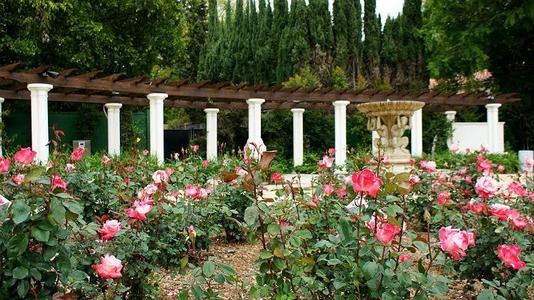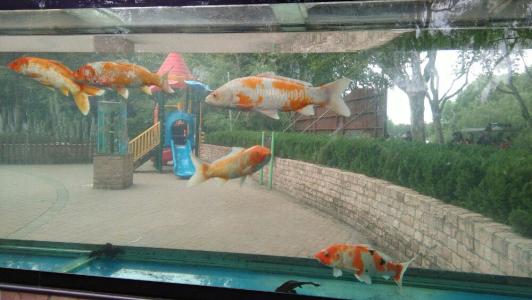Chinese Name: 上海动物园 Pronunciation: Shànghǎi Dòngwùyuán
Suggested Visiting Hours: 3-5 Hours
Address: No.2381, Hongqiao Road, Shanghai, China
| Tourists | Price |
| Adults | 40 yuan |
| Children (6-18 years old) |
20 yuan |
| Students (with Student Cards) |
|
| Seniors (60-65 years old with certificates) |
36 yuan |
1. Seniors aged over 65 years old with valid certificates are free of charge;
2. The disabled with valid certificates are free of charge;
3. Children shorter than 1.3m or younger than 6 years old are free of charge (accompanied by adults).
| March - October | 8:00- 17:00 |
| November to February | 8:00-16:30 |

Shanghai Zoo is located at 2381 Hongqiao Road, Changning District, Shanghai, close to Shanghai Hongqiao International Airport. It was built in 1954, formerly known as Western Suburbs Park. Shanghai Zoo is one of the top ten zoos and the second largest city zoo in China, covering an area of 743,000 square meters, with a display of more than 6,000 animals from 400 species. Among them, there are world-famous giant pandas with the titles of “national treasure” and “living fossil”, as well as rare wild animals such as golden monkeys, South China tigers and Chinese alligators, which are native to China. There are also representative animals around the world, such as gorillas, African lions, giraffes, kangaroos and South American tapirs.
There are nearly 620 kinds of trees planted in the park. In particular, there are 100,000 square meters of open lawn. Every green landscape in the park is integrated with the ecological environment of the animals. Especially at Swan Lake, there are reeds and green trees around the lake, groups of pelicans and wild geese often lining up or circling in the blue sky, graceful and vigorous. In recent years, with the goal of building an urban ecological zoo, Shanghai Zoo has gradually built a visually barrier-free ecological animal exhibition area, making visitors feel as if they were in nature and enjoying the beauty of the wild.
Since its opening, Shanghai Zoo has received nearly 160 million visitors. It has developed into a comprehensive park from a place for sighting only, which integrates four functions: recreation, popularization of animal knowledge, scientific and technological research, as well as wildlife protection. There are exhibition areas of amphibians and reptiles, herbivores, beasts and birds, and also exhibition halls for science and education. Children in the zoo can have a close contact with the animals by feeding them. They can also go to the lawn to play in the sun, go boating, and Ferris wheel is also a good choice. With beautiful landscapes, wonderful wildlife worlds, ecological wildlife exhibition areas, harmonious coexistence of humans and animals, Shanghai Zoo will leave visitors with beautiful memories and a love for nature.
In 1900, a British resident in Shanghai opened “Yutai Racecourse”, covering an area of 1.3 hectares.
In 1914, eight British companies purchased “Yutai Racecourse”, which was later rebuilt into “Golf Club” in 1916.
On March 20, 1953, Chinese Ministry of Foreign Affairs approved the report of the Foreign Affairs Office of Shanghai Municipal People’s Government on the recovery of the golf course. In September, Shanghai Municipal People’s Government decided to build a cultural park based on the original golf course.
On May 25, 1954, to commemorate the fifth anniversary of the liberation of Shanghai, it was named “Xijiao Park” (Western Suburbs Park), as a cultural and leisure park officially opened to the public. On June 20, the General Office of State Council announced to Shanghai Municipal Government that an elephant donated by Xishuangbanna, Yunnan Province, to Chairman Mao, would be raised and displayed in Shanghai. In August, Shanghai Municipal Government decided to expand Xijiao Park into a zoo.
In May 1955, the first animal cages and houses, such as the Elephant Palace, were built, covering an area of 1,857 square meters. On July 9, the animal exhibition area was officially opened to the public. The exhibition covered an area of 4 hectares with 46 animals of 31 species, such as elephants, tigers, bears, monkeys and deer.
From 1956 to 1958, some rough cages were dismantled. New Lion and Tiger House, Canine Cages, Bear Hill, Monkey Hill, Songbird and Raptor Cages were built, and the animal exhibition area was extended to the whole park.
In 1959, to celebrate the 10th anniversary of the founding of the People’s Republic of China and the 5th anniversary of the founding of the park, Swan Lake was excavated and Lion and Tiger Mountain, Panda Ridge, Deer Park and Hundred Flower Hall were built. The area of the park was expanded to 70 hectares, initially forming a large comprehensive zoo. Siberian tiger was bred for the first time.
From 1960 to 1963, China suffered a three-year period of hardship and extreme material deprivation. In order to ensure the supply of animal feed, the staff made use of all available resources of the society and the park to ensure the normal growth of 1807 animals of 193 species.
In May 1964, Fuxing Park and the attached zoo to Zhongshan Park were merged into Xijiao Park. Animal Hospital was also established. South China tiger, golden snub-nosed monkey, and Francois’ langur monkey were bred successfully.
From 1972 to 1976, the gate of the park was rebuilt, and independent animal breeding grounds were built, laying a foundation for the breeding of wild animal populations.
From July to August 1974, animals were exchanged with Yokohama Zoorasia in Japan (1 pair of grey cranes and 1 pair of macaca thibetanas exchanged for 1 pair of Japanese deer and 1 pair of penguins). This was the first international exchange of animals at Shanghai Zoo.
In 1977, clouded leopard, California sea lion, white-lipped deer and other animals were bred successfully.
In 1978, Asian elephant and kangaroo were bred successfully for the first time.
On January 1, 1980, Shanghai Xijiao Park was officially renamed Shanghai Zoo. There were 4005 animals of 308 species (including subspecies) on display. In November, chimpanzee was bred for the first time.
In January and November 1982, two groups of breeding technicians went to Tibet for field investigation. On July 15, the research on Chinese alligator reproduction won the third prize of Shanghai’s major scientific and technological achievements. On August 23, giant panda “Bai Mei” gave birth. Giant panda was successfully bred for the first time.
On May 24, 1984, a major forum and a history of the zoo exhibition were held to commemorate the 30th anniversary of the founding of the park. The oriental white stork was successfully bred by artificial reproduction for the first time in the world.
In 1985, South American tapir, red goral and white ibis were bred successfully for the first time in China.
Two David’s deer were presented to the zoo by British Richmond Park in 1986.
On June 4, 1987, 25 kinds of animals went to China Welfare Institute and were exhibited for the disabled children.
In October 1988, South American bison was bred successfully for the first time.
In May 1997, the new gate of “Lucky Elephant Welcoming Guest” (Jixiang Yingbin) was completed. Shanghai Zoo opened its first animal art festival. In June, African penguin was bred for the first time.
In May 2002, “Shanghai Science Popularization Education Joint Exhibition” was held in the zoo. In October, it was rated as a national 4A level scenic spot.

Chinese Rose Garden located in the giraffe exhibition area is small and exquisite. In the center of the flower bed is a fountain in the shape of a petal-shaped marble cup, and the three balls at the core represent the center of the flower. Chinese roses mainly bloom in May and October. At this time, the exhibition area will be full of varieties of Chinese roses in different colors competing for blossom.

The Goldfish Corridor Bank is located on the north of the Science and Education Hall of Shanghai Zoo and the south of the Goldfish Corridor, not far from the main gate. After you have visited the Amphibious Reptile House, follow the main road to the Goldfish Corridor. Every spring, when the spring breeze and the sun are pleasantly warm, the Goldfish Corridor Bank is the most beautiful. The weeping willows are full of life and the water with the reflection of the sky is clearly blue. I invite you to enjoy the beautiful spring scenery here.

The lawn, which dates back to the golf course in the 1910s, is famous. There is green grass, tall trees, and undulating terrain. It has an area of more than 10,000 square meters, and you will have a broad and distant view standing on the lawn. The trees are so old and thick that the shade is heavy. Every summer, there are groups of pelicans and geese flying and circling in the sky. Every winter when the lawn is white covered with snow, a Snow Kingdom will appear in front of you.
Do not bring in, release or take away any animals.
No vehicles are allowed in the park (except baby carriage and handicapped trolley).
It is strictly prohibited to carry inflammable, explosive, toxic and other dangerous goods into the park.
It is strictly prohibited to climb over the fence, purse Seine, power grid and other animal isolation facilities to avoid being scratched or bitten by animals.
Please take good care of animals. Feeding or disturbing animals is strictly prohibited.
Please take good care of flowers and trees in the garden. Do not pick flowers and break branches, climb trees, hold ropes and draw objects at will.
Please take good care of the public facilities in the park and do not damage them.
Please keep the environment clean and tidy in the park.
Visitors with children should take good care of your children, do not play or take photos in the water and other dangerous areas, to ensure the safety of the park.
If your child is lost, you can call our hotline at 62687775-8000.
If your property is lost, you can call the Visitor Service Center at 62689733 for help, or 110 if necessary.
If you are injured, you can call the Park Visitor Service Center at 62689733 for help, or 120 if necessary.
Amphibious Reptiles House → Science Education Hall → Goldfish Corridor → Birds Exhibition Area → Children Zoo → Swan Lake → Pets World → Panda House → Carnivores Exhibition Area → Herbivore Exhibition Area → Primate Exhibition Area
Spring is the most ideal season to visit Shanghai Zoo. Everything grows and animals are most active. Summer is too hot and a lot of animals do not move. It would be boring to wander here in this season. In autumn, it is still very hot in October, and it is often very cold in November, with few days of fine weather. In winter, many animals hibernate so it would be a pity to miss some animals.
If you take a bus, you can take 57, 91, 519, 739, 748, 807, 809, 911, 941, 1207, get off at Shanghai Zoo Station, and walk for about 3 minutes.
Take Metro Line 10, get off at Shanghai Zoo Station, and take Exit No. 1.
Chinese: 请带我去上海动物园。English: Please take me to Shanghai Zoo.
If you take a taxi from Shanghai Hongqiao International Airport, it takes about 20 minutes (about 30 yuan).
If you take a taxi from Shanghai Pudong International Airport, it takes about 60 minutes (about 200 yuan).
If you take a taxi from Shanghai Railway Station, it takes about 30 minutes (about 50 yuan).
